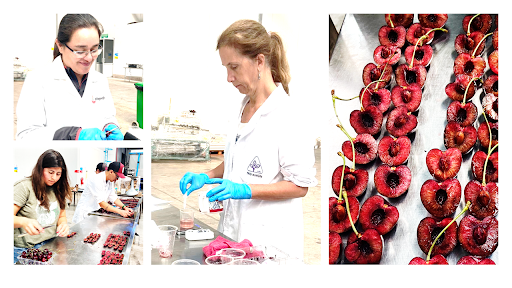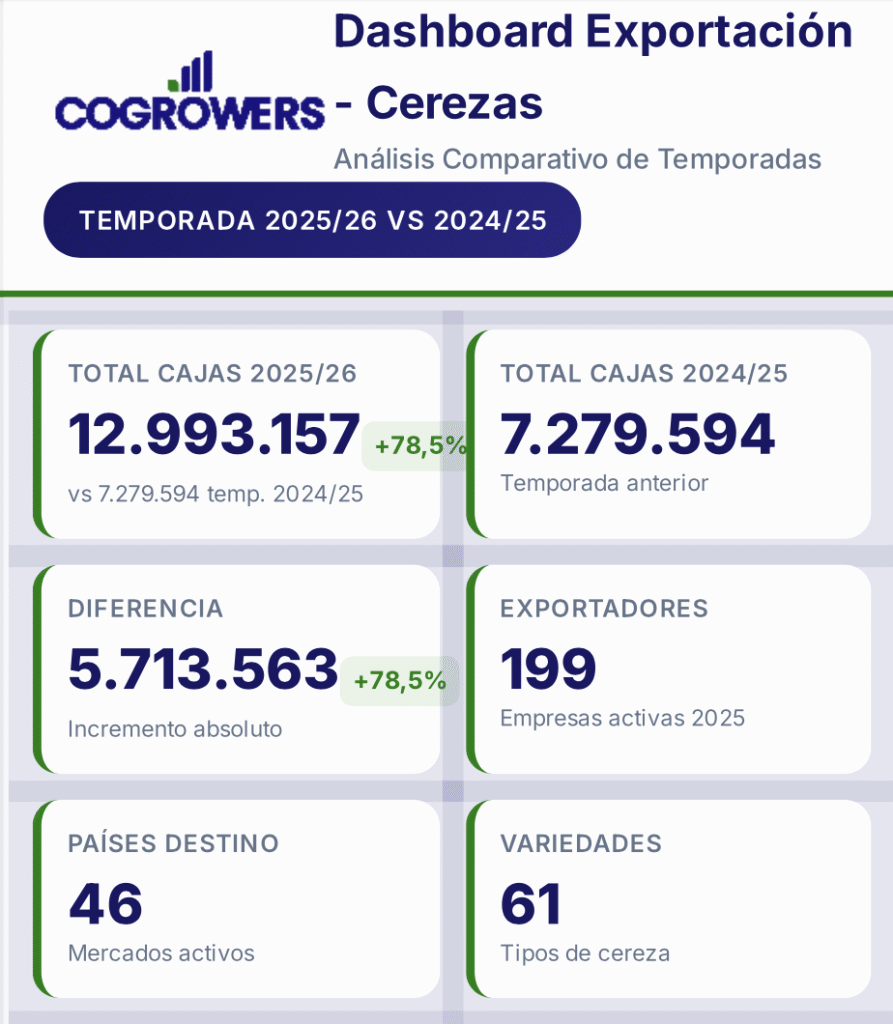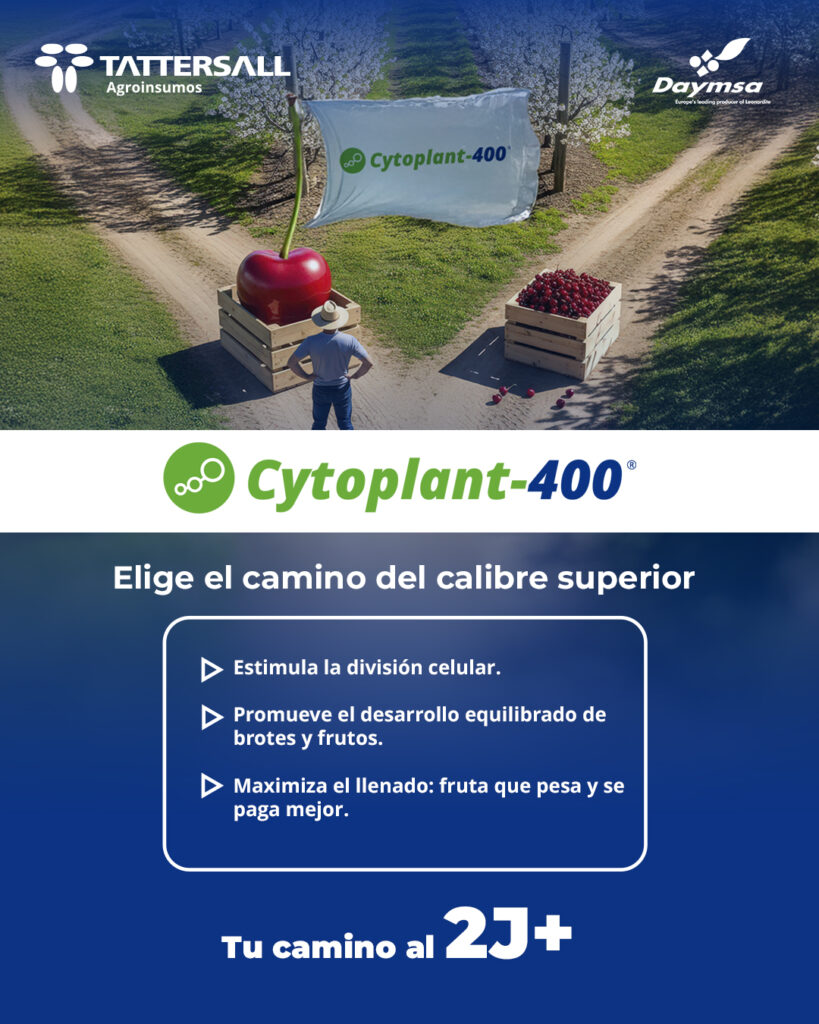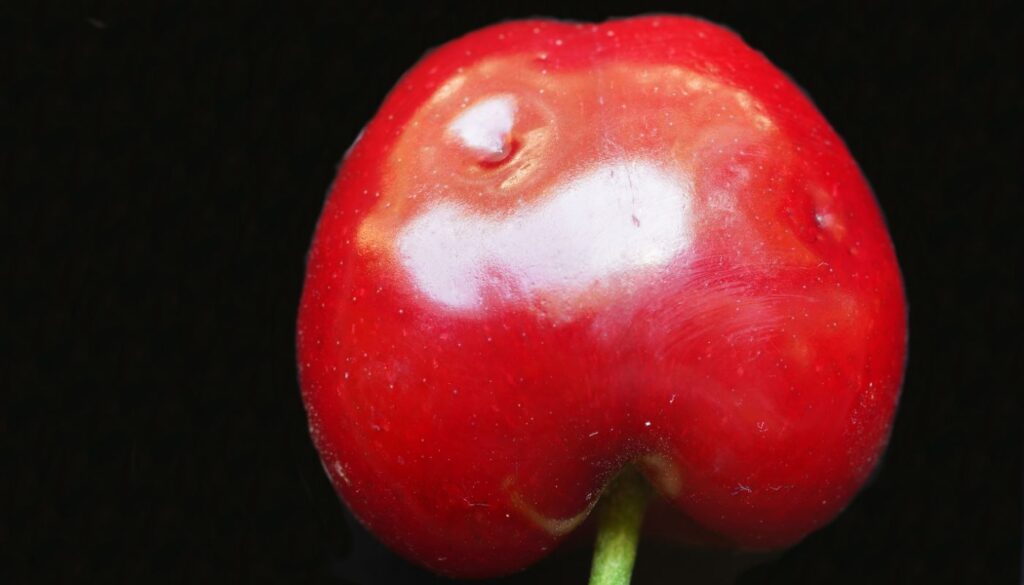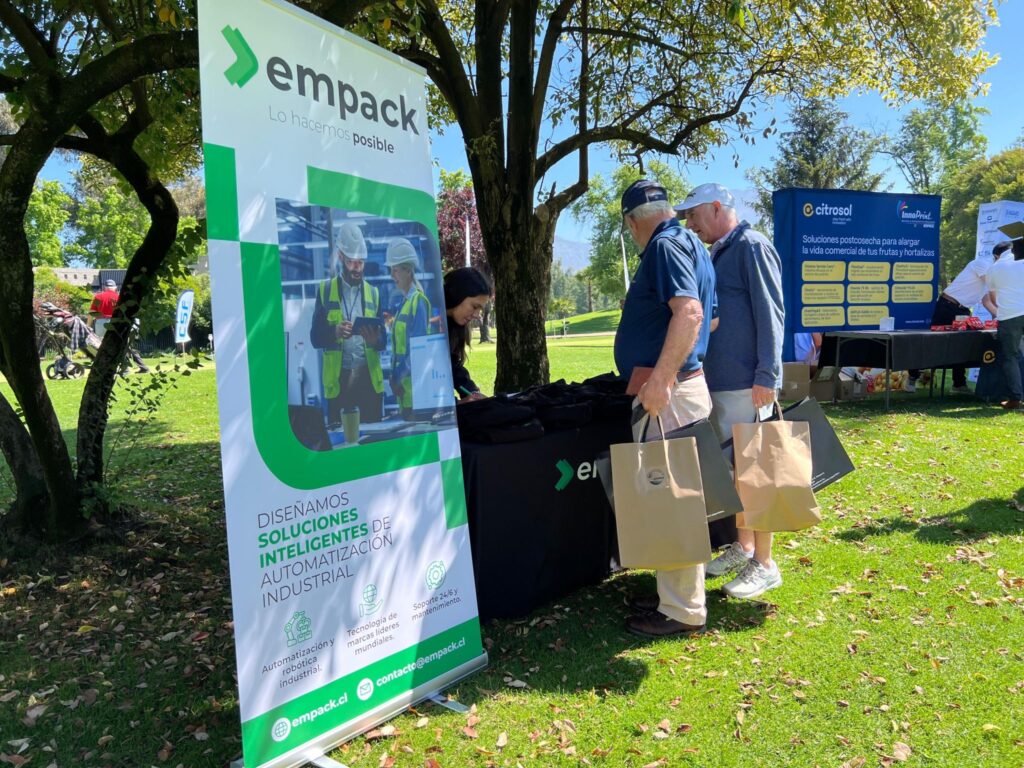Por: Hector Garcia O., Co-Founder and General Manager of Diagnofruit Laboratories Ltda, SOCHIFIT Member [email protected]
Every season has positive and negative aspects; depending on which of them gives more weight to the final character of the season, it can be defined whether it was forgotten or triumphed. With this premise, the 2021-22 season was one of those to forget, just to mention a negative aspect, logistics was a headache for species such as grapes, the fruit did not reach sale due to extremely long transits that caused a significant part of the production to find a direct path to waste. Cherries were not exempt from this problem and the fruit ended up being available to the Chinese customer even 60 days after it was packed, which resulted in rot and/or physiological disorders, which, although we knew, the long storage period exacerbated and generated sales well below expectations.
Within the range of negative situations, in terms of fruit condition, due to the long post-harvest periods, one disorder caught our attention and was essentially related to a variety, Regina, the third most planted in Chile and the mainstay of cherry production in the southern zone. The problem: INTERNAL BROWNING (Photo 1), which, although it had already been described in previous years, in 2022 became a major problem.
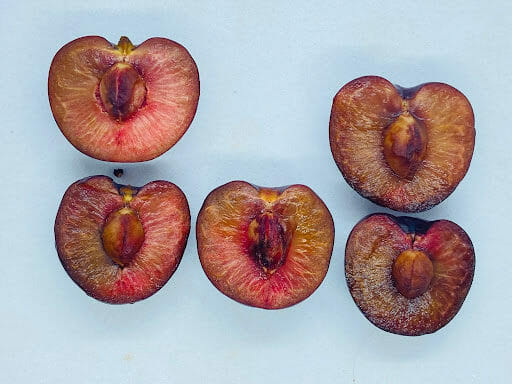
A few months ago, Trío Kimün discussed the issue in an article entitled: What do we know about the weaknesses of the Regina variety? The review leads us to conclude that we know little about the origin of browning and, going a little further, we know little about the ripening process, the well-studied models of others Prunus do not respond to the non-climacteric character of the cherry. Factors such as the harvest season either references to fertilization, are mentioned as having the greatest impact on the generation of browning; however, the clues to the origin of the disorder in the fruit and how the status of the plant influences it or why Regina is more susceptible to presenting the damage, are questions that we were far from elucidating.
For this reason, we began a process to create a project that would allow us to collect the largest amount of information in one season, and thus, in the short term, this information could guide us to understand the origin of the browning and define the possibility of tools, perhaps not to stop the disorder completely, but to lessen the effects and slow down the development of the damage.
Listening to the genes
One of the ideas that made the most sense to us, due to the precision and speed of results, was the ability to “listen to genes.” If we put this idea into practice, it would be possible to establish the expression of genes in the fruit ripening process. In this way, we could establish which signals in the plant are being activated or deactivated and could be involved in the browning process. We reviewed the literature and existing databases and established that the possibility of carrying out this type of study in cherry trees was absolutely possible.
The essay
So, we planned a trial that would give us the possibility of establishing which genes change their expression as the fruit matures; we considered different orchards and browning histories and a variety other than Regina that would give us a baseline behavior. Each orchard was sampled in 4 different colors based on the progress of maturity, and the fruit was stored and characterized at each of these stages. So, we had the field plan, but how do we listen to the genes? The answer: RNAseq
The technique
Without going into too much detail, RNAseq, or RNA sequencing, is a technique that uses massive sequencing to reveal the presence and quantity of RNA in a biological sample at a given time; this allows us to take a “snapshot” of everything that is expressed at the instant we obtained the sample. The beauty of this technique is that we can look at genes at the same time, and observe processes from their genesis, for example, pigment generation, ethylene synthesis, cell wall degradation and many other markers of different processes that could be involved in the development of browning.
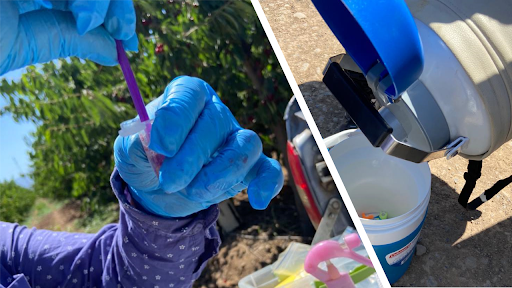
Collaborators and sponsorships
We had the idea, the technique, the equipment and advanced human capital, in other words, complete capabilities, but financing?
RNAseq is an analysis that, although its price has decreased in recent years, is still expensive and all the logistics of the test needed extensive resources to work in the best way. So we began a process of convincing, conversations with exporters and agrochemical companies were part of the work during last winter. Frusan and Ranco Cherries, through Raul Gonzalez and Pamela Osorio, area managers of the respective exporters, were the first to join in to contribute to the project. Then Copefrut, Prize, Dole and Yucay They ended up closing the group through the venies of Jorge Albornoz, Juan Punti, Pamela Donoso and Marta Cardenas, respectively. At the same time, and thinking about not losing a season, we decided to test management based on biostimulants, growth regulators, among other compounds, and for this we invited agrochemical companies to test some product from their palettes that could help reduce the problem under the knowledge we had up to that moment; understanding that beyond the possibility of having an effective tool against browning, advancing in its understanding to generate a sustainable industry is of utmost importance for all members of the production chain.
The agrochemical companies and technical managers who sponsor and participate in the project are:
AGROCONNEXION, Alvaro Vargas, Head of Research and Development.
ANASAC, Cristian Riquelme, Head of R&D Growth Regulators.
BASF, Nicolas Silva, Market Development Technician SR.
BAYER, Diego Saenz-Diez, Field Marketing Intensive Crops.
Bioamerica, Alejandra Espinosa, Head of Research and Development.
PHYTOLOGICAL, Milton Elgueta, Director of Innovation and Technological Development.
SUMITOMO CHEMICAL, Sebastian Barrios, Strategic Marketing Manager.
SYNGENTA, Claudia Munoz, Fruit Crop Manager.
Finally, one last but very important industry player has helped us finance the project: Chilean Cherry Committee, entity belonging to ASOEX, which also collaborates in the dissemination of research advances.
Technical team
The only way for this ambitious project to work was with a top-level technical team, with knowledge in various areas, from the field to bioinformatics. Considering the above, we generated a work structure in accordance with the contribution possibilities of each professional in each topic that the initiative requires. The team was formed as follows:
- Activities and field trials: equipment AVIUM, Carlos Tapia, Emilio Martinez, Nicholas Martinez and Alex Vergara.
- Maturity monitoring and post-harvest activities: equipment Trio Kimün, Jessica Rodriguez, Francisca Barros and Militza Ivelic.
- RNA extractions in the field and laboratory: equipment Diagnofruit, Violet Rojas, Claudio Gonzalez, Jaime Gozalvo, Sebastian Gonzalez and Elisa Miranda.
- Bioinformatics analysis: study groups University of Chile, Dr. Alan Zamorano, UDLA, Dr. Cecilia Ramos and Dr. Leonardo Pavez and Diagnofruit, Dr. Miguel Lopez.
- General management of the project, Diagnofruit.
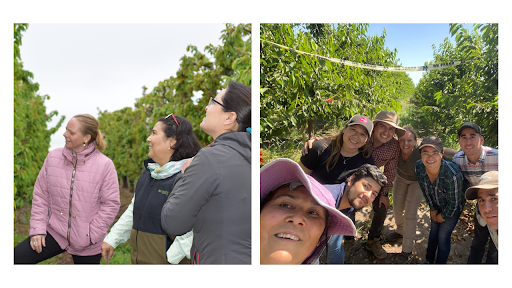
First findings and projections
As expected, the tests have been complex, it was possible to consolidate samples from 7 production units whose RNAs are preserved at -80ºC, awaiting the results of the storage in refrigerated storage, in this way we will choose those that represent the most diverse behaviors and that allow us to compare the transcriptomic activity.
We were able to detect the development of browning in pre- and post-harvest, which allowed us to continue with the next stage of the project.
The evaluations of the fruit in storage will end in mid-February, from which point the molecular area will take over the project, starting with the bioinformatics activities, which will extend into the fall and part of the winter of 2023.
We have added post-harvest trials that were not initially contemplated, in order to understand what happens during storage. The idea is to add RNAseq analysis, which is why we are still seeking funding, with the aim of advancing and delving deeper, not only into the origin of browning, but also into the ripening and extended post-harvest process to which we subject Chilean cherries.
Finally, we hope to contribute to the consolidation of a sustainable industry. We may have the BEST CHERRY IN THE WORLD, but we must be critical and generate local information to address our problems, overcome them and continue exporting a premium quality product.
